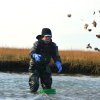How do I strengthen weak body parts?
Q: Do you have any suggestions on how to fix weak body parts that are unequal to the rest of the body? I am having trouble with my shoulders and lower back and need some suggestions on how to get them stronger.
A: Many people have weaknesses, but very few will take the time to correct them. Instead they brush them off as something that can’t be helped and end up with a serious injury. Remember, working out and staying in shape is about longevity, and if you want to play the game for life, you have to take steps to keep your body functioning correctly. Here are five techniques I use to help combat weakness for my clients. Give them a try if you have a weak area that needs improvement.
Identify the weakness
The first step to fixing a problem area is locating the weakness. This is not always as easy as you think, because sometimes a weak muscle will give misleading symptoms. A good example of this is people who have overdeveloped front deltoids - front shoulder muscles - will have trouble isolating their chest, but the weakness is actually in the rear deltoids - the back of the shoulder - and until it’s fixed, the front deltoid will take over and prohibit the shoulder from functioning correctly. This can happen with a variety of different muscles, but once you pinpoint the problem you can take steps to fix it.
Prioritize the weakness
In most cases, people develop a weakness because they’ve neglected to work a particular area, and if they do get around to doing it, it’s usually a halfhearted attempt at the end of their workouts. To fix this problem, you have to prioritize your weakness and work on it first when you are fresh and have energy. This will allow you to focus on form, technique, and gaining strength and endurance in an area that needs to be brought up to speed with the rest of the body. A good example would be a person with a back injury who needs to strengthen the abdominals and spinal erectors to stay strong and keep from getting injured. He or she should do so at the beginning of the workout to ensure success. It’s also a good idea to work on the weakness at the beginning of the week before you do anything else.
Target the weakness
Once you have identified the weakness, you must find specific ways that will help you correct the problem, but you must be sure to choose wisely and gradually bring yourself along with appropriate exercises. Start with low-impact exercises and light weight, and as you get stronger you can upgrade to more difficult workouts. So if you have week hamstrings, it doesn’t make sense to try to strengthen them with lunges first. Instead try the following progression: Start with Swiss ball leg curls, upgrade to seated leg curls and graduate to walking lunges.
Incorporate band work
Exercise bands are a great tool for strengthening weaknesses because they bridge the gap between rehabilitating weak or injured muscles and strength training with weights. Sometimes muscles are so weak that it’s impossible to lift and control free weights, but bands provide the perfect level of resistance until strength levels are improved. Bands also provide variable resistance, and you can adjust the difficulty as you get stronger by simply stretching the band farther or using a thicker band. Once you have graduated from using bands, you’re now ready to add some low-level free-weight exercises to target the weak area.
Use unilateral movements to strengthen the body equally
Unilateral movements are exercises that require you to lift with one arm or leg at a time, forcing the body to develop strength equally. Unilateral movements are an excellent way to strengthen weaknesses while working on balance, coordination and muscle endurance. Good examples of exercises that fall into this category are one-arm dumbbell press, one-arm dumbbell row, single-leg dead lifts and reverse lunges. Try to add a few of these exercises periodically for both upper and lower body strength, but be sure to integrate regular bilateral exercises that use two arms or legs as well.






















































